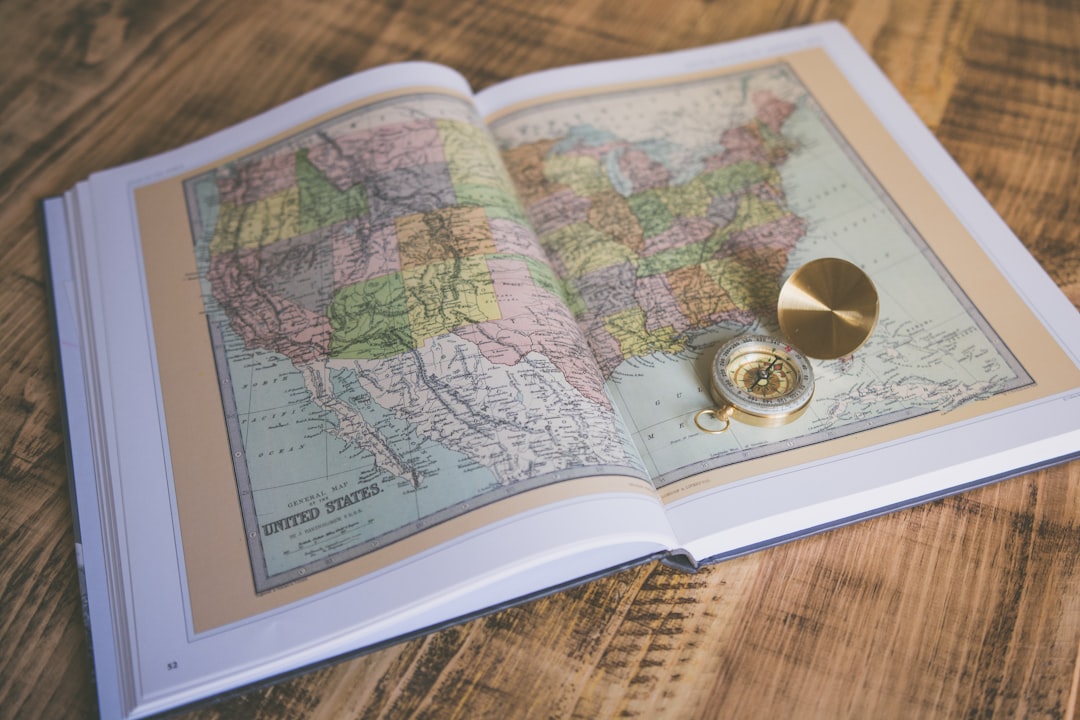Planting in Portland: Discovering the City’s USDA Zone

Understanding USDA zones is crucial for successful gardening in Portland. The United States Department of Agriculture (USDA) has developed a system that divides the country into different zones based on average annual minimum temperatures. These zones help gardeners determine which plants are most likely to thrive in their specific climate. In Portland, where the climate can be challenging due to its unique combination of factors, knowing your USDA zone is essential for selecting the right plants and ensuring their success.
Key Takeaways
- Understanding USDA Zones is crucial for successful gardening in Portland
- Finding your zone helps determine the best plants for your garden
- Portland’s unique climate affects plant growth, so it’s important to explore its factors
- Top plants for Portland gardens are listed by USDA zone for easy reference
- Successful planting in Portland requires attention to soil, sunlight, and water needs
Understanding USDA Zones: A Guide for Gardeners in Portland
USDA zones are determined based on the average annual minimum temperature in a given area. The lower the zone number, the colder the climate. For example, Zone 1 has an average minimum temperature of -50 to -60 degrees Fahrenheit, while Zone 13 has an average minimum temperature of 60 to 70 degrees Fahrenheit.
In Portland, the USDA zone is typically Zone 8b, although some areas may fall into Zone 8a or Zone 9a. This means that the average annual minimum temperature in Portland ranges from 15 to 20 degrees Fahrenheit. While this may seem relatively mild compared to other parts of the country, it is important to remember that other factors such as rainfall and soil type also play a role in plant growth.
Finding Your Zone: How to Determine the Best Plants for Your Portland Garden
To determine your specific USDA zone in Portland, you can use online resources such as the USDA Plant Hardiness Zone Map or consult with local gardening experts. It is important to know your zone because different plants have different temperature requirements and may not survive if planted outside their recommended range.
Once you know your zone, it is crucial to choose plants that are suitable for that specific climate. This will increase the chances of success and minimize the risk of losing plants due to extreme temperatures or other unfavorable conditions. Local nurseries and gardening centers can provide guidance on which plants are best suited for your zone in Portland.
Exploring Portland’s Unique Climate: Factors that Affect Plant Growth
| Climate Factor | Description | Impact on Plant Growth |
|---|---|---|
| Temperature | Average temperature ranges from 40°F to 80°F | Plants require specific temperature ranges for optimal growth |
| Precipitation | Annual rainfall ranges from 30 inches to 45 inches | Plants require adequate water for growth and development |
| Sunlight | Portland receives an average of 144 sunny days per year | Plants require sunlight for photosynthesis and growth |
| Soil Type | Portland has a mix of clay, silt, and sand soils | Plants require specific soil types for optimal growth and nutrient uptake |
| Altitude | Portland’s elevation ranges from sea level to 4,000 feet | Plants require specific altitude ranges for optimal growth |
Portland’s climate is characterized by mild, wet winters and warm, dry summers. The city receives an average of 36 inches of rainfall per year, with most of it occurring between October and April. The soil in Portland is typically clayey and acidic, which can pose challenges for plant growth.
Temperature, rainfall, and soil type are the main factors that affect plant growth in Portland. The mild winters allow for a longer growing season compared to other parts of the country, but the wet conditions can lead to issues such as root rot if proper drainage is not provided. Additionally, the clayey soil can become compacted and waterlogged, making it difficult for plants to establish healthy root systems.
Top Plants for Portland Gardens: A Comprehensive List by USDA Zone
Here is a list of recommended plants for each USDA zone in Portland:
Zone 8b:
– Rhododendrons: These evergreen shrubs produce beautiful flowers in a variety of colors and thrive in the mild climate of Zone 8b.
– Japanese Maples: These ornamental trees are known for their stunning foliage and can add a touch of elegance to any garden.
– Blueberries: These fruit-bearing shrubs are well-suited to the acidic soil in Portland and provide delicious berries during the summer months.
Zone 8a:
– Lavender: This fragrant herb loves the dry summers of Zone 8a and can add a pop of color and scent to your garden.
– Roses: With proper care, roses can thrive in Zone 8a and provide beautiful blooms throughout the summer.
– Tomatoes: These warm-season vegetables require plenty of sunlight and warmth, making them a great choice for Zone 8a gardens.
Zone 9a:
– Citrus Trees: With their need for warm temperatures and ample sunlight, citrus trees are a great choice for Zone 9a gardens.
– Bougainvillea: These vibrant flowering vines love the heat and can add a tropical touch to your garden.
– Succulents: With their ability to store water, succulents are well-suited to the dry conditions of Zone 9a.
Tips for Successful Planting in Portland: Soil, Sunlight, and Water Needs

Proper soil preparation is crucial for successful planting in Portland. The clayey soil can be improved by adding organic matter such as compost or well-rotted manure. This will help improve drainage and provide essential nutrients for plant growth. It is also important to ensure that plants receive adequate sunlight and water. Most plants require at least six hours of direct sunlight per day, so it is important to choose a location in your garden that receives enough light. Additionally, regular watering is essential, especially during dry periods.
Best Practices for Maintaining a Healthy Garden in Portland’s Climate
Maintaining a healthy garden in Portland’s climate requires some best practices. Fertilization is important to provide plants with the necessary nutrients for growth. Organic fertilizers are recommended as they are less likely to harm the environment and promote long-term soil health. Pruning is another important practice to maintain the shape and health of plants. Regular pruning can help remove dead or diseased branches and promote new growth. Pest control is also crucial in Portland’s climate, as the mild winters can allow pests to survive and thrive. Using organic pest control methods such as companion planting or introducing beneficial insects can help keep pests at bay.
Native Plants vs. Exotics: Choosing the Right Plants for Your Portland Garden
Using native plants in your Portland garden has several benefits. Native plants are adapted to the local climate and soil conditions, making them more likely to thrive with minimal care. They also provide important habitat and food sources for local wildlife. However, there are also exotic plants that can thrive in Portland’s climate. These plants may offer unique colors, textures, or scents that can enhance your garden. It is important to choose plants that are not invasive and will not outcompete native species.
Creating a Sustainable Garden in Portland: Eco-Friendly Planting Strategies
Creating a sustainable garden in Portland involves using eco-friendly planting strategies. Composting is a great way to reduce waste and provide nutrient-rich soil for your plants. Rainwater harvesting is another eco-friendly practice that can help conserve water and reduce your reliance on municipal water sources. Using organic fertilizers and pest control methods is also important to minimize the use of harmful chemicals that can harm the environment.
Overcoming Common Gardening Challenges in Portland: Pests, Diseases, and Weather Issues
Portland gardeners face several common challenges, including pests, diseases, and weather-related issues. Slugs and snails are common pests in the area and can cause damage to plants. Using organic pest control methods such as beer traps or copper barriers can help keep these pests at bay. Powdery mildew is a common fungal disease that affects many plants in Portland’s climate. Proper air circulation and avoiding overhead watering can help prevent this disease. Weather-related issues such as heatwaves or heavy rainfall can also pose challenges for gardeners. Providing shade or using mulch can help protect plants from extreme heat, while proper drainage can prevent waterlogging during heavy rainfall.
Connecting with Portland’s Gardening Community: Resources and Events for Plant Enthusiasts
Portland has a vibrant gardening community with many resources and events for plant enthusiasts. Local gardening clubs and organizations offer workshops, classes, and plant sales where you can learn from experienced gardeners and connect with fellow plant lovers. There are also several nurseries in the area that specialize in native plants or exotic varieties. Attending garden tours or plant swaps is another great way to learn from other gardeners and discover new plants for your garden.
Understanding USDA zones and the unique climate of Portland is essential for successful gardening in the area. By determining your specific USDA zone, choosing suitable plants, and following best practices for planting and maintenance, you can create a thriving garden in Portland. Connecting with the local gardening community and utilizing available resources will further enhance your gardening experience and help you learn from experienced gardeners. So, get started on your own Portland garden and enjoy the beauty and rewards of gardening in this unique climate.
If you’re curious about what planting zone Portland, Oregon falls into, you might find this article on Lawn World’s website quite helpful. It provides a comprehensive sitemap of their website, allowing you to easily navigate through various gardening and landscaping topics. By clicking on the following link, you can explore their extensive collection of articles and resources related to planting zones and other gardening information: https://www.lawnworld.com/sitemap.html.
FAQs
What is a planting zone?
A planting zone is a geographic area that is defined by the USDA based on the average minimum temperature in that area. It helps gardeners determine which plants are most likely to thrive in their region.
What is the planting zone for Portland, Oregon?
Portland, Oregon is located in USDA Plant Hardiness Zone 8b. This means that the average minimum temperature in the area is between 15 and 20 degrees Fahrenheit.
What types of plants are best suited for Zone 8b?
Zone 8b is ideal for a wide variety of plants, including many fruits and vegetables, as well as ornamental plants like roses, camellias, and azaleas. Some popular vegetable crops for this zone include tomatoes, peppers, and beans.
What are some gardening tips for Zone 8b?
Gardeners in Zone 8b should be aware of the potential for hot, dry summers and mild, wet winters. It is important to choose plants that are well-suited to these conditions and to provide adequate irrigation during dry spells. Mulching can also help to retain moisture in the soil.
Can plants from other zones be grown in Zone 8b?
Some plants from other zones may be able to grow in Zone 8b, but it is important to choose plants that are well-suited to the local climate. Plants that are not adapted to the local conditions may struggle to survive or may require extra care and attention.



